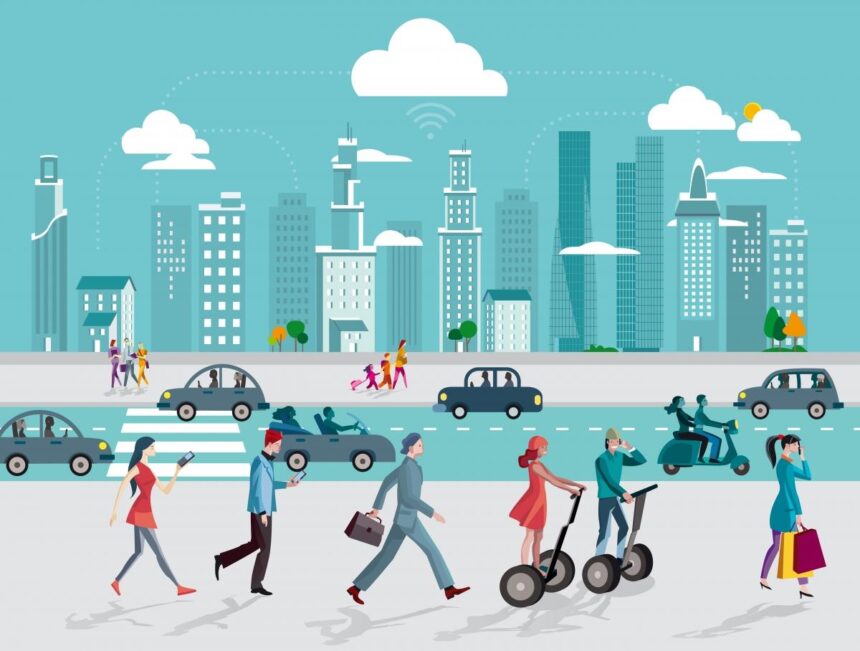In an era where urbanization spirals towards new heights, cities around the globe find themselves at a crossroads, where the design of mobility solutions carries profound implications for their future. As populations swell and environmental challenges intensify, innovative approaches to urban mobility are not merely advantageous; they are essential. From the bustling streets of Bangladesh, where the World Bank funds resilient infrastructure projects aimed at enhancing climate adaptability, to the strategic improvements being made in Dodoma’s urban landscape that promote sustainable transportation options, cities are reimagining their frameworks. These initiatives reflect a shift toward interconnected systems that prioritize both efficiency and sustainability, providing a glimpse into a future where urban spaces thrive through creative mobility solutions. As we delve into this exploration, the possibilities for transforming city life come into sharp focus, urging us to envision a new chapter in the urban narrative.
Revolutionizing Urban Transport with Smart Technology
Urban transport is undergoing a transformative phase, significantly enhanced by the integration of smart technologies. As cities embrace these innovations, they are not only improving the efficiency of public transportation but also enriching the overall experience for commuters. Key dimensions of this evolution include:
- Real-time Data Sharing: Instant updates on schedules, delays, and traffic conditions provide passengers with unprecedented transparency.
- Multi-Modal Integration: The advent of Mobility as a Service (MaaS) platforms allows users to seamlessly plan and pay for journeys across various modes of transport.
- Sustainability Initiatives: Smart solutions facilitate the deployment of electric and shared mobility options, reducing emissions and enhancing urban air quality.
Moreover, the collaboration among municipalities, transport companies, and technology innovators is essential for overcoming the challenges associated with these advancements, such as high costs and logistical complexities. To illustrate, consider the following table showcasing some notable smart mobility initiatives:
| City | Initiative | Description |
|---|---|---|
| Los Angeles | Metro Micro | On-demand microtransit services to improve last-mile connectivity. |
| Seattle | LinkLight Rail | Smart ticketing systems integrated with mobile applications. |
| New York | NYC Ferry | Expansion of water transit with real-time tracking features. |

Sustainable Mobility: Integrating Green Solutions for City Life
In an era where urbanization is rapidly changing the landscape of our cities, integrating sustainable mobility solutions is more critical than ever. These solutions aim to transform conventional transport systems into smarter, greener alternatives that can seamlessly blend with city life. By leveraging technologies such as IoT-enabled traffic management, cities can enhance traffic flow, minimize congestion, and ultimately lower greenhouse gas emissions. Vehicles powered by electric energy are at the forefront of this movement, providing cleaner options for urban transport while promoting renewable energy sources and optimizing charging infrastructure in strategic locations.
Moreover, the concept of last-mile optimization plays a vital role in ensuring that residents have easy access to essential services. This can be achieved through the integration of diverse transport modes, including shared mobility options like bike-sharing and electric scooters, which can reduce reliance on personal vehicles. Furthermore, the integration of AI-driven traffic systems allows cities to adapt in real-time to changing conditions, ensuring efficient transport solutions for everyone. By investing in these innovative approaches, urban areas can enhance livability and promote sustainable economic growth in a rapidly evolving world.
Enhancing Accessibility: Prioritizing Inclusivity in Urban Design
To foster a more inclusive urban landscape, it is essential to integrate designs that prioritize accessibility at every level of urban planning. This can be achieved through:
- Universal Design Principles: Implementing features that accommodate all users, regardless of age or ability.
- Accessible Transportation: Providing public transit options that are easily navigable for individuals with disabilities.
- Smart Infrastructure: Utilizing technology to enhance navigation, such as apps that guide users to accessible routes.
Moreover, community engagement is key to identifying specific local needs and preferences. By fostering dialogue with diverse groups, urban planners can ensure their strategies reflect the varied experiences of city dwellers. Key areas of focus include:
- Feedback Loops: Establishing channels for ongoing input from residents, particularly those with disabilities.
- Awareness Programs: Training city staff and stakeholders on the importance of inclusivity in urban design.
- Collaborative Projects: Partnering with organizations that specialize in accessibility to create innovative solutions that address real-world challenges.
Community Engagement: Building Collaborative Approaches to Mobility Solutions
Transformative urban mobility solutions rely heavily on active community engagement. When communities are included in the planning process, their unique needs and preferences can directly shape the outcomes of mobility initiatives. Innovative approaches such as workshops, interactive surveys, and community forums empower residents to share insights and offer feedback. This collaboration not only fosters a sense of ownership but also enhances the overall viability of mobility projects. By leveraging local knowledge, cities can identify specific areas for improvement, ensuring that proposed solutions resonate with actual usage patterns and community desires.
To illustrate the potential for successful partnerships in mobility solutions, consider the following aspects that communities can focus on: public transportation accessibility, walkability improvements, and integration of green spaces. Engaging diverse stakeholders-ranging from city planners and local businesses to non-profits and citizen advocacy groups-creates a holistic view of the challenges and opportunities within urban mobility. Below is a simple table showcasing some community-driven initiatives from various cities:
| City | Initiative | Outcome |
|---|---|---|
| Barcelona | Superblocks | Reduced traffic, increased green areas |
| Portland | Safe Routes to School | Improved student safety and walking rates |
| Mumbai | Community Mobility Hubs | Seamless transit connections for locals |
Wrapping Up
As we stand at the crossroads of innovation and urban living, the future of our cities beckons for transformative solutions in mobility. From the revitalization efforts in Dodoma, where World Bank funding promises to enhance urban mobility and create thousands of jobs, to the architectural explorations showcased in Toronto’s Doors Open event, it is clear that the path forward involves collective visioning and collaborative efforts. Cities are not just spaces; they are living ecosystems that thrive on connection, creativity, and resilience. By embracing innovative mobility solutions that prioritize accessibility, sustainability, and community engagement, we can pave the way for urban environments that not only meet the needs of today but also inspire the possibilities of tomorrow. Together, let us reimagine our cities, ensuring they become vibrant, inclusive, and adaptable hubs for all who inhabit them.












